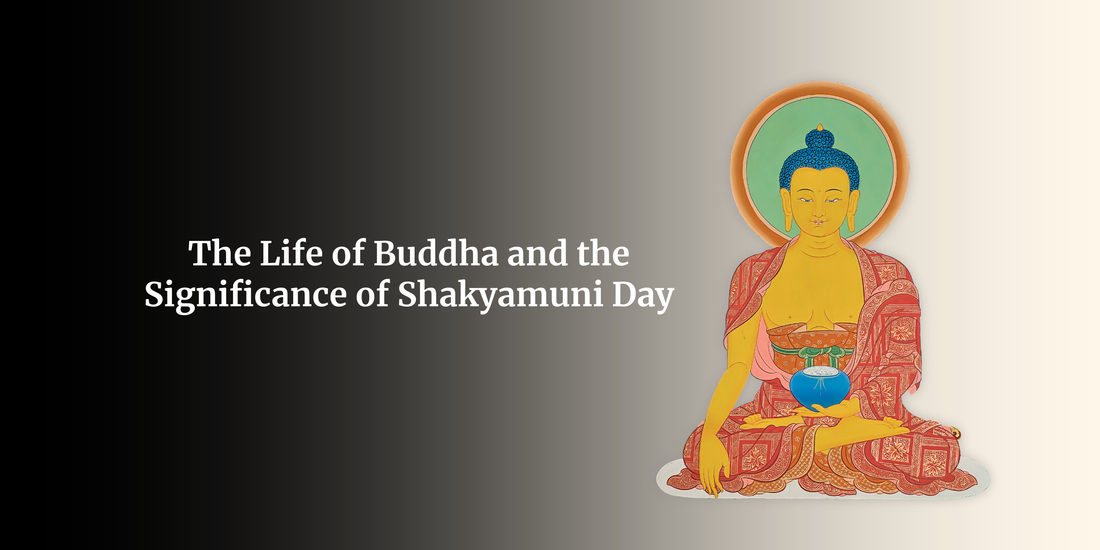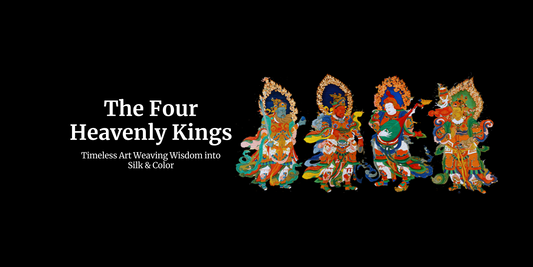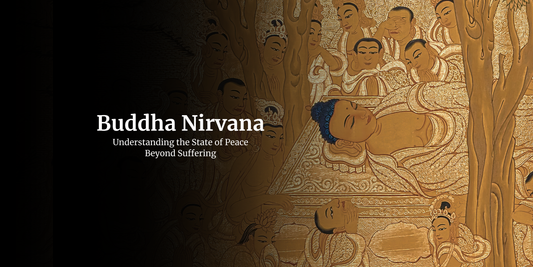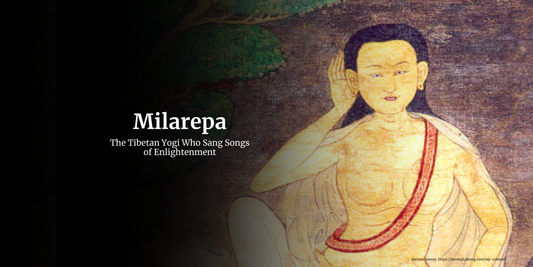- Buddhas Art of Healing
- Buddhism Blog | Teachings, Philosophy & Mindful Living
- The Life of Buddha and the Significance of Shakyamuni Day

The Life of Buddha and the Significance of Shakyamuni Day
Have you ever wondered about the journey of a man who left behind the luxuries of a royal palace to find the ultimate truth of life? Siddhartha Gautama, known as the Buddha or Shakyamuni (“Sage of the Shakya clan”).
His life is a timeless story of compassion, wisdom, and the pursuit of enlightenment. Shakyamuni Day is celebrated to honor his birth, enlightenment, and parinirvana and reminds us of the path to inner peace and spiritual awakening.
Let’s explore his life from birth to enlightenment and parinirvana, along with the celebration of Shakyamuni Day.
Birth of Siddhartha Gautama
Siddhartha Gautama was born into a royal family in Lumbini, around the 5th to 6th century BCE. His father, King Suddhodana, ruled the Shakya clan, and his mother, Queen Maya, had a miraculous dream before his birth. In her dream, she saw a white elephant entering her womb, symbolizing the arrival of a noble soul.
According to legend, Siddhartha was born in the Lumbini garden, where he stood and took seven steps immediately after birth, declaring this would be his final rebirth.
At each of the seven steps, a lotus flower is said to have sprung from the ground, marking the miraculous arrival of the newborn Buddha, Siddhartha Gautama.
Early Life in the Palace
Siddharth was raised in luxury and rest within the boundaries of the Royal Palace. His father, King Suddhodana, sought to shield him from the harsh realities of life, providing him with every pleasure and indulgence. Siddhartha married Princess Yasodhara, and they had a son named Rahula.
Despite the opulence, Siddhartha felt a deep sense of dissatisfaction. He began to question the meaning of life beyond material wealth and sensory pleasures, sensing that there was more to existence than what he had not been exposed to.
The Great Renunciation (Pabbajja) and the Spiritual Quest
1. The Four Sights: The Confrontation with Reality
Driven by an innate curiosity, the 29-year-old prince ventured outside the palace walls on four successive chariot rides. These excursions revealed the Four Sights, which shattered his illusion of perpetual comfort:
- An Old Man (Jara): He saw undisputed reality of aging
- A Sick Man (Vyadhi): He saw the vulnerability of the human body to disease, and pain
- A Dead Corpse (Marana): He faced the last and unavoidable fate of all living beings: death and decomposition.
- A Wandering Ascetic (Sramana): He saw a sacred person, pure and composed, who abandoned the world in search of spiritual answers to these many problems.
The first three sights revealed the universal truth of Dukkha (unsatisfactoriness, suffering). The fourth sight revealed a potential path to its resolution.
2. The Departure
The same night, after seeing his sleeping family, Siddharth resolved to abandon his worldly life. He commanded his charioteer, Channa, to make his horse Kanthak a saddle, and he left the palace, his kingdom and his legacy behind.
He crossed the Anoma river, shaved his head, exchanged his royal silks for simple clothes, and sent Channa back with his property. The event, known as the Great Renunciation, marked the beginning of his life as an ascetic seeker.
3. The Years of Asceticism
For six years, Siddhartha became a student of the foremost meditation teachers of his time, Āḷāra Kālāma and Uddaka Rāmaputta. He quickly mastered their teachings, attaining high states of meditative absorption (jhāna), but realized these states were temporary and did not lead to permanent liberation from rebirth and suffering.
He then joined a group of five ascetics and reached the path of excessive self-confidence. He practiced severe fasting, consuming only a few grains of rice or a drop of bean soup in a day.
He held his breath for a long time and exposed himself to excessive heat and cold. He reduced his body to a skeleton, almost died in the process, earning the honor of his five companions for his unwavering determination.
Nevertheless, he concluded that this path of extreme fasting was as fruitless. This weakened the mind and did not lead to knowledge.
This realization gave birth to the Buddhist theory of the Middle Way, a path to a medium that avoids both sensual pleasure and self-mortification.
He accepted a simple offering of milk-rice from a young woman named Sujata. Getting his strength, he prepared for the final meditation.

Discover our Shakyamuni Buddha thangka collection. The Buddha after the attainment of enlightenment.
The Enlightenment (Bodhi)
1. The Seat of Awakening
Siddhartha walked to Bodh Gaya. He resolved to sit under a sacred pipal tree (later known as the Bodhi Tree) and not rise until he had attained full enlightenment.
2. Confronting Mara
His resolve was tested by Mara, the personification of death, desire and confusion. Mara started a multi-dimensional attack.
-
Mara’s army: He called a terrible army of demons, who threw weapons at Siddharth. Through the power of his metta (Prem-Daya), the weapons turned into flowers.
-
Mara’s daughters: He sent his three beautiful daughters, Tanhā (Craving), Arati (Aversion), and Rāga (Attachment), to seduce him. Siddhartha remained unmoved, seeing them as impermanent and empty.
-
The Challenge of Right: Finally, Māra claimed the seat of enlightenment rightfully belonged to him, as his own spiritual accomplishments were greater. He demanded a witness.
Siddhartha reached down and touched the earth, calling upon the very planet itself to bear witness to his countless lifetimes of generosity and virtue.
The earth thundered in response, "I am your witness!" This gesture, the Bhūmisparśa Mudrā (Earth-Touching Gesture), definitively vanquished Māra.
3. The Three Watches of the NIght
With mind purified and focused, Siddhartha entered into deeper states of concentration. Throughout the night, he gained the Three Knowledges (Te-Vijjā):
-
First Watch: With his mind concentrated, he recollected his past lives, understanding the cycle of rebirth in all its detail.
-
Second Watch: He developed the "divine eye," perceiving how all beings pass away and are reborn according to their karma (their intentional actions), in states of happiness or suffering based on their ethical conduct.
- Third Watch: He entered the deepest truths of existence. He understood the Four Noble Truths of dependent origin (Paṭiccasamuppāda), which explains how sorrow arises and how it stops. He eradicated the deepest mental disregard (asvas), sensitive desire for existence and ignorance
As the morning star rose in the predawn sky, his mind was completely liberated. At the age of 35, Siddhartha Gautama had attained full awakening. He was now the Buddha, the Awakened One.
Finally Journey to Parinirvana
1. Turning the Wheel of Dharma
After his enlightenment, the Buddha spent weeks experiencing the bliss of liberation. Hesitant to teach, fearing the profound truth he discovered would be too difficult for most to understand, he was persuaded by the divine Brahmā Sahampati to teach for the sake of those "with little dust in their eyes."
He located five of his former companions located in the deer park of Sarnath. He gave his first teaching, Dhammacakkappavattana Sutta—"Setting the wheel of dharma in motion." In this, he outlined the middle path and four great truths:
- Dukkha’s truth (broader nature of sorrow/dissatisfaction)
- Truth of the Origin of Dukkha (tanha, craving)
- Truth of ending of Dukkha (Nirvana)
- Truth of the path leading to the end of Dukkha (The Noble Eightfold Path)
This event marked the establishment of the Buddhist monastic community, Sangha. One of the five, Kaundinya, became the first person to understand the teaching, making him the first Buddhist monk in the world.

Explore our Path to Nirvana Thangka. The thangka that depicts the Buddha's teaching and the steps required to reach the full enlightenment.
2. 45 Years of Teaching
For the next four and a half decades, Buddha walked the Gangetic plain, teaching religion to all—kings and paupers, Brahmins and outcasts, men and women.
He founded a well-structured association of monks and nuns, gave thousands of discourses (Sutas/sutras), and his teachings were remembered and passed orally.
3. The Final Day and Mahaparinirvan
At the age of 80, in the city of Kushinagar, Buddha knew that his end was near. He chose to lie between the two sal trees, which immediately bloomed out of season.
His last task was teaching one last person, the ascetic Subhadda, who became his last direct disciple.
His last words were a deep and permanent instruction on the imperfect nature of self-reliance and all conditioned things:
"Vayadhammā saṅkhārā, appamādena sampādetha."
"All conditioned things are of a nature to decay. Strive on with diligence."
He then entered a series of meditative absorptions (jhanas) and passed away, having attained the Mahaparinirvana—beyond the cycle of birth, death and rebirth. His body was cremated, and his remains were distributed among different clans and were enshrined in stupas across the land.
Shakyamuni Day: The Unified Celebration of a Transcendent Life
1. The Sacred Coincidence
Shakyamuni Day, commonly known as Vesak (from the Pali month "Vesakha") or Buddha Purnima, is seen on the Veshak’s ancient Indian lunar month (usually April/May).
Its importance arises from the traditional belief that all three decisive events of the Buddha's life occurred on this same full moon day:
- His Birth in Lumbini
- His Enlightenment in Bodh Gaya
- His Parinirvana in Kushinagar
This interaction is not seen as a mere coincidence but as a deep spiritual symbol, which unites the entire arc of human spiritual journey.
2. The Profound Significance: A Threefold Reflection
This day holds a very deep meaning for every practitioner as well as a time to reflect on the Buddha's life.
-
Birth represents the ability of awakening (Buddha-nature) vested within every emotional being.
-
The Enlightenment represents the fulfillment of that ability through one's own diligent effort (virya) and the discovery of a timeless, objective truth (Dharma).
-
The Parinirvana represents the ultimate goal: final liberation (Nirvana) from the cycle of suffering (Samsara).
3. In-Depth Observances and Their Symbolic Meanings
The celebrations are active, participatory, and rich with symbolism directly linked to the Buddha's life and teachings:
- Bathing the idol of Buddha: The devotees poured water (often fragrant with flowers) on a statue of the infant Buddha, indicating one hand on the sky and one on the earth. This symbolizes:
- Purifying one's own body, speech, and mind of the three poisons (greed, hatred, and ignorance).
- Clear your mind, speech and three poisons (greed, hatred and ignorance).
-
The act itself is a meditation on maintaining purity in an unworldly world.
-
Observing the Eight Precepts (Attha Sila): Lay practitioners often make strict moral vows for the day, including fasting after noon. It is a direct simulation of the path to discipline (Sila) of Buddha, which is the foundation of wisdom.
-
Practicing Generosity (Dana) and Compassion (Karuna): Giving food to monks, donations, and any act of kindness It respects Buddha’s infinite compassion and the importance of giving selflessness.
-
Meditation (Bhavana) and Dharma Study: People engage in extended meditations and sutras (especially remembering the life of Buddha) and listen to discourses. This is the practice of cultivating wisdom (Prajna).
-
Decorating with Lights and Lanterns: Homes and monasteries are illuminated with candles, oil lamps and colored lanterns. It is a symbol of the enlightenment of knowledge that Buddha brought into the world, removing the darkness of ignorance (avidya) for all beings.
- Veneration of the Bodhi Tree: Followers meditate under Bodhi’s tree and respect the place of enlightenment.

You can explore our Life of Buddha Thangka, which depicts his life events.
Conclusion: A Living Dharma
Shakyamuni Day is much more than a historical memory. It is a vibrant, annual reunion of the path of liberation.
It is a powerful reminder that Buddha was not a god but a person who achieved the final status of peace with his efforts.
His life is the final proof that enlightenment is possible. The day tells every Buddhist not only to honor the teacher but also to make the teaching embrace.
To try with hard work, to walk in the middle, and to feel the truth of religion, as Shakyamuni did on that full moon night in Bodh Gaya, 2,500 years ago.

1. Was the Buddha a god?
No. He was a human who attained enlightenment through his own effort.
2. What does “Buddha” mean?
“Awakened One” or “Enlightened One.”
3. Why is that date of Shakyamuni Day different each year?
It is based on lunar calendars (Purnima of April/May).
4. Did his birth, enlightenment, and death really happen on the same day?
According to Buddhist tradition, yes, all three events occurred on the same full moon day.
5. What is the difference between Nirvana and Parinirvana?
Nirvana is enlightenment during life. Parinirvana is the final nirvana upon death, with no rebirth.
Explore our collection of authentic Tibetan Thangkas from the art of Buddha's Art of Healing. Each of our Thangkas has been prepared to inspire peace, clarity, and spiritual connection.
Follow us on Facebook and Instagram to stay updated on Tibetan Buddhist festivals, special days, and more.



